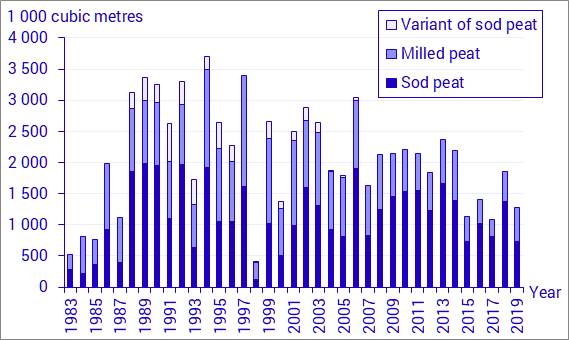Peat 2018 - Production, use and environmental impact:
Harvest of fuel peat decreased in 2019
Statistical news from Statistics Sweden 2020-06-18 9.30
In 2019, the harvest of fuel peat decreased by 31 percent from 1.9 million cubic metres to 1.3 million cubic metres (1.4 terawatt-hours). However, the harvest was normal compared with the five-year average.
Among fuel peats, milled peat decreased, while sod peat increased. The largest harvests were noted in the counties of Norrbotten and Västernorrland.

Trade in peat decreased
Trade in peat fell in 2019 compared with 2018. Exports decreased by 6 percent and imports decreased by 32 percent. Imports consisted of fuel peat and exports consisted of horticultural peat. Exports of peat were four times as high as imports. Imports amounted to 67 000 tonnes, while exports amounted to 239 000 tonnes. Total trade amounted to 0.9 million cubic metres.
Fuel combustion of peat declined
Peat and peat briquettes are used exclusively for electricity generation and district heating. In 2019, the combustion of peat decreased by 35 percent, from 1.7 TWh to 1.1 TWh. This decrease was due to a high use of peat in 2018. The extent of the use of peat depends on the weather and on the fuel supply, in particular biofuels. Total trade amounted to 0.9 million cubic metres.
Harvest of horticultural peat remained unchanged
The harvest of horticultural peat amounted to 1 598 000 cubic metres in 2018, which means it was on the same level as the previous year.
Horticultural peat is used mainly in gardening, forestry and in stables.
Statistical Database
More information is available in the Statistical Database
Feel free to use the facts from this statistical news but remember to state Source: Statistics Sweden.
